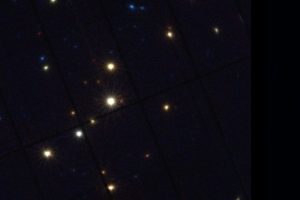INAF-OAPA researchers observe for the first time X-ray emission from an active region in a B star

The study of the X-ray emission from stars provides an unmatched view of those energetic phenomena occurring in stars. In massive stars (O and early B stars), soft X-ray photons (less energetic than about 1 keV) are emitted from shocks in stellar winds. More energetic photons (the hard X-ray emission) is due to colliding stellar winds in binary systems or more energetic shocks in winds in magnetically active stars. In small stars (later than F spectral type) X-rays are emitted from the coronae (the outer stellar atmosphere with plasma at few million degrees, heated by the magnetic field generated by stellar dynamo), and stellar magnetic activity such as flares.
Stars with intermediate mass (B, A, and F stars) do not have winds producing powerful shocks emitting X-ray photons. Besides, their internal structure does not allow the production of magnetic field (stellar dynamo is generated in stars whose internal structure is divided into a radiative and a convective zone, while these stars are fully radiative). Thus, X-ray emission is not expected from these stars.
There are, however, interesting exceptions, such as the B2 star ρ Ophiuchi A, which is part of a binary system with another B2 star separated by about 300 AU. In a paper published in 2017 by Astronomy & Astrophysics, the astronomer I. Pillitteri of the Astronomical Observatory of Palermo has presented evidence of X-ray emission from a magnetic active region of this star. In its new paper “Detection of magnetic field in the B2 star ρ Ophiuchi A with ESO FORS2” recently published by A&A, the intensity of the magnetic field (490±80 G) in this active region has been measured using spectra obtained with the spectrograph FOR2 at the European Southern Observatory. This is the first detection of X-ray emission from a magnetic active region and successful measurement of its magnetic field in a early B star.
The image (link) shows the X-ray variability of ρ Ophiuchi A observed by XMM/Newton. The XMM press release on this study can be read at this link.
